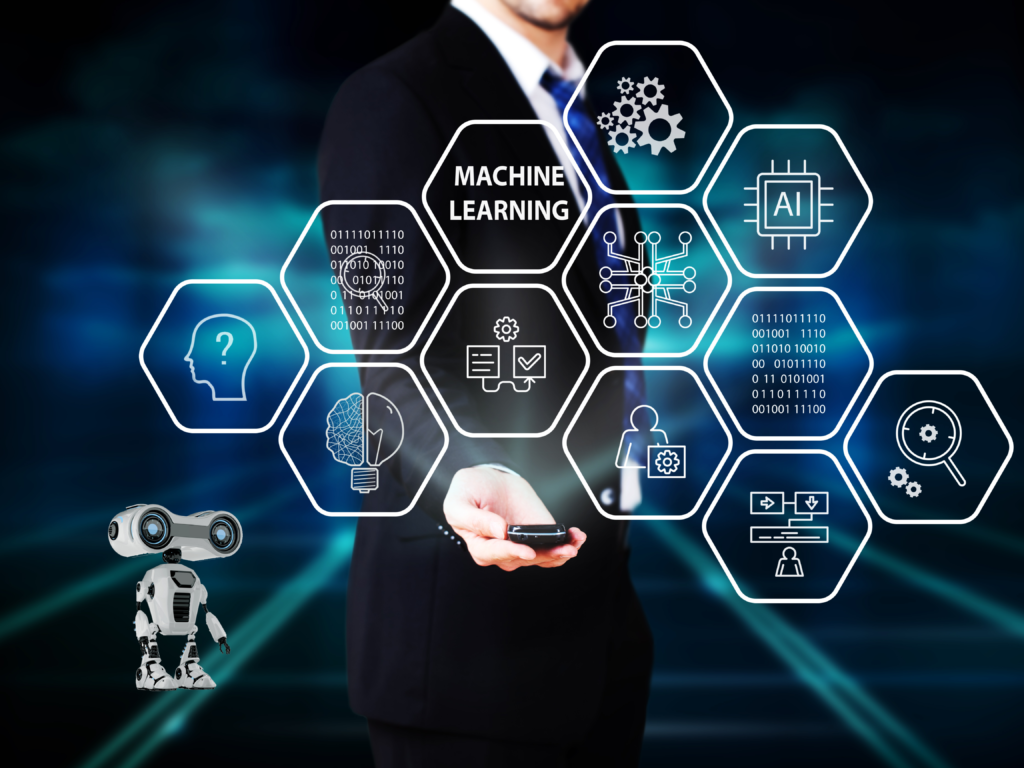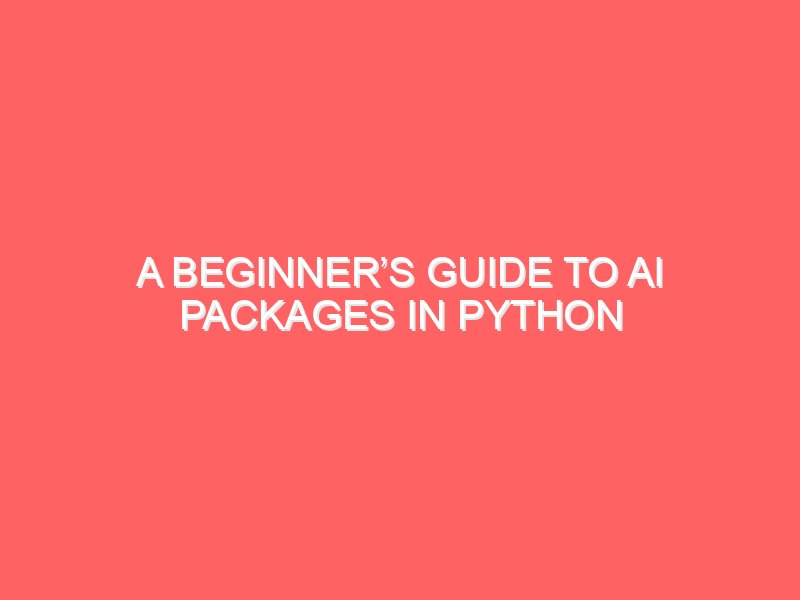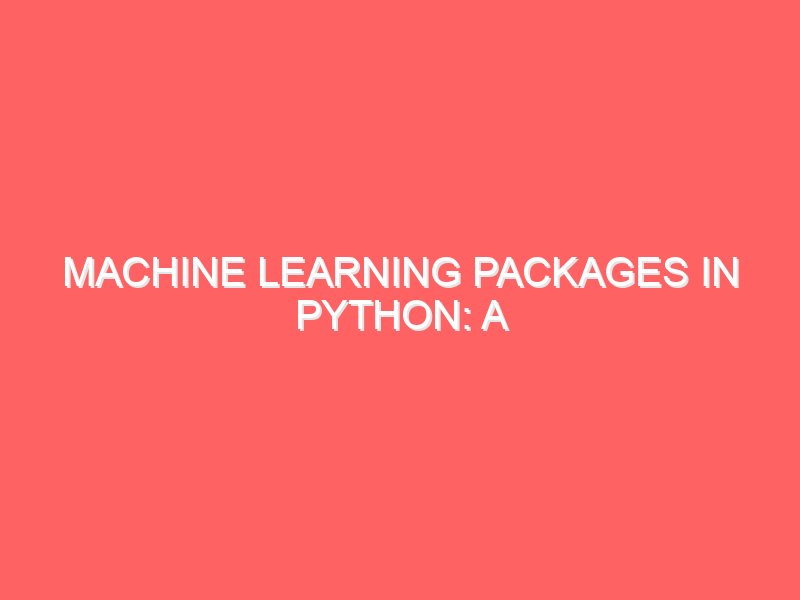Machine Learning Essentials: From Basics to Advanced
Introduction to Machine Learning Machine learning is a pivotal branch of artificial intelligence that focuses on the development of algorithms that enable computers to learn from and make predictions based on data. The significance of machine learning lies in its ability to process vast amounts of information and discern patterns that may not be immediately apparent to humans. This capacity has transformed various industries, offering unprecedented levels of accuracy and efficiency in tasks ranging from predictive analytics in finance to personalized recommendations in e-commerce. Historically, the foundations of machine learning can be traced back to the mid-20th century with the advent of early computer science and neural networks. The term itself was popularized in the 1950s, yet it wasn’t until the 21st century, fueled by advancements in computational power and the availability of large datasets, that machine learning became a critical tool for innovation. As we delve deeper into machine learning essentials, we will encounter three primary types: supervised, unsupervised, and reinforcement learning. Supervised learning involves training algorithms on labeled datasets, allowing them to make predictions or classifications based on input data. This method is widely utilized in applications such as speech recognition and image classification. Conversely, unsupervised learning deals with unlabeled data, focusing on identifying hidden patterns or intrinsic structures within the data. Examples include clustering and association analyses, which are invaluable in market research. Finally, reinforcement learning differs substantially; it is a trial-and-error approach where an agent learns to make decisions in an environment to maximize rewards over time. Each type of learning contributes uniquely to the broader machine learning landscape, catering to diverse scenarios in real-world applications. Key Terminologies and Concepts Understanding machine learning essentials requires familiarity with specific terminologies that are foundational to the discipline. One of the core concepts is an algorithm, which is a set of rules or instructions designed to solve a problem or perform a task. In machine learning, algorithms are used to identify patterns within data. Various algorithms, such as decision trees, neural networks, and support vector machines, serve different purposes based on the nature of the data and the desired outcome. Next, we have the term model, which refers to the output produced by a machine learning algorithm after it has been trained on data. Models encapsulate the patterns learned by an algorithm and can make predictions based on new input data. It is crucial to differentiate between the model and the algorithm used to create it, as they serve distinct roles. Training data is another essential element in machine learning. This is the dataset utilized to train the model, enabling it to learn and make predictions. Training data consists of input features and corresponding labels; the features are the individual measurable properties or characteristics of the data, while the labels are the output or target values that the model aims to predict. As algorithms hone in on these patterns, there is a risk of overfitting, a common pitfall wherein a model learns noise and details too well from the training data, compromising its performance on unseen data. Thus, it is imperative to achieve a balance where models generalize effectively instead of merely memorizing the training set. Developing an understanding of these key concepts lays the groundwork for delving deeper into more intricate machine learning essentials. By becoming familiar with these terms, readers can better navigate the complexities of both foundational and advanced topics in the field. Understanding Datasets and Data Preprocessing In the field of machine learning essentials, the significance of datasets cannot be overstated. Quality data is the foundation upon which effective machine learning algorithms are built. When embarking on a machine learning project, selecting and curating a dataset that accurately represents the problem domain is critical. A well-chosen dataset has the potential to enhance model performance significantly while a poor dataset can yield misleading results, even if the underlying algorithm is sound. Therefore, understanding the attributes of a quality dataset is essential for practitioners at all levels. Once a dataset is selected, the next vital step is data preprocessing. This process involves preparing and cleaning the data to ensure it is suitable for use in machine learning models. Several techniques are employed during data preprocessing, including cleaning and normalization. Cleaning involves removing any noise, inconsistencies, or irrelevant information that may skew the results. This may include handling missing values, correcting errors, or filtering out outliers that do not reflect typical behavior. Normalization is another critical preprocessing technique aimed at bringing all the attributes onto a similar scale without distorting the differences in the ranges of values. By ensuring that one feature does not disproportionately influence the outcome, normalization allows machine learning algorithms to learn more efficiently. Furthermore, feature extraction enhances model performance by reducing dimensionality, making the model less complex and more interpretable. This involves selecting and transforming variables to create new features that encapsulate essential information from the original dataset. Understanding these aspects of datasets and data preprocessing equips practitioners with the tools to effectively build machine learning models. It emphasizes the need to systematically approach the data challenges that arise in any machine learning task, ensuring that practitioners are well-prepared for more advanced techniques in the field. Exploring Common Algorithms Machine learning encompasses various algorithms that are foundational to its application across different domains. Among these, linear regression, decision trees, support vector machines, and neural networks stand out as particularly prevalent approaches that can be adapted to a wide array of problems. Understanding the functionality, strengths, and appropriate use cases of these algorithms is essential for anyone looking to navigate the landscape of machine learning essentials. Linear regression is one of the simplest algorithms employed in machine learning, primarily used for predicting continuous outcomes. By establishing a linear relationship between the independent and dependent variables, it offers both interpretability and a straightforward implementation. Its strength lies in its efficiency and simplicity, making it ideal for situations where data relationships are linear. However, when dealing with complex datasets or non-linear relationships, its limitations become apparent.
Machine Learning Essentials: From Basics to Advanced Read More »








